#TBT Making a Case for the Breitling Top Time 810
Today’s #TBT takes a look at a chronograph that I’ve been hunting for a long time, a Mark 1 Breitling Top Time 810. It’s a watch – and a watch line that existed for some time – that’s been grossly underrated in vintage watch collector circles for some time, but is finally getting some deserved notice. Proof of this will come shortly after reading this article should you go look for one because -poof- they’ve all but disappeared.
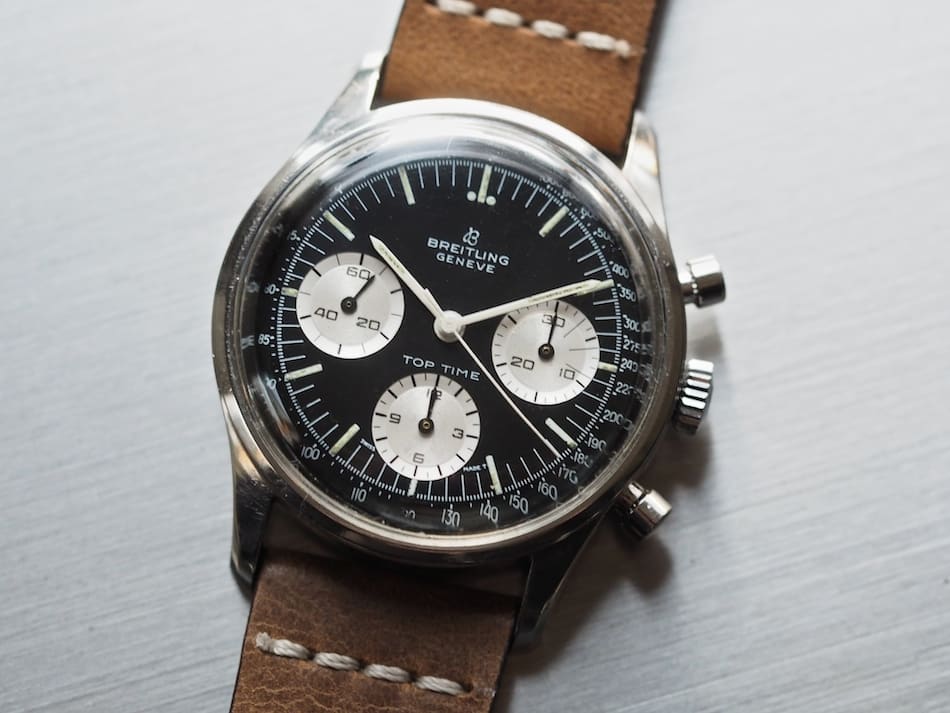
Breitling Top Time 810 vs Heuer Carrera
The Heuer Carrera receives the lion’s share of credit for ushering in modern and clean chronograph design in 1964. We’ve covered the early 2447 and there’s no doubt about it that it’s one of watch history’s most important pieces. Along with said design traits, Heuer quickly linked itself to famous racers in an effort to further legitimize the watches as useful instruments for the track. However, in the same year, the Breitling 810 Top Time was also introduced.
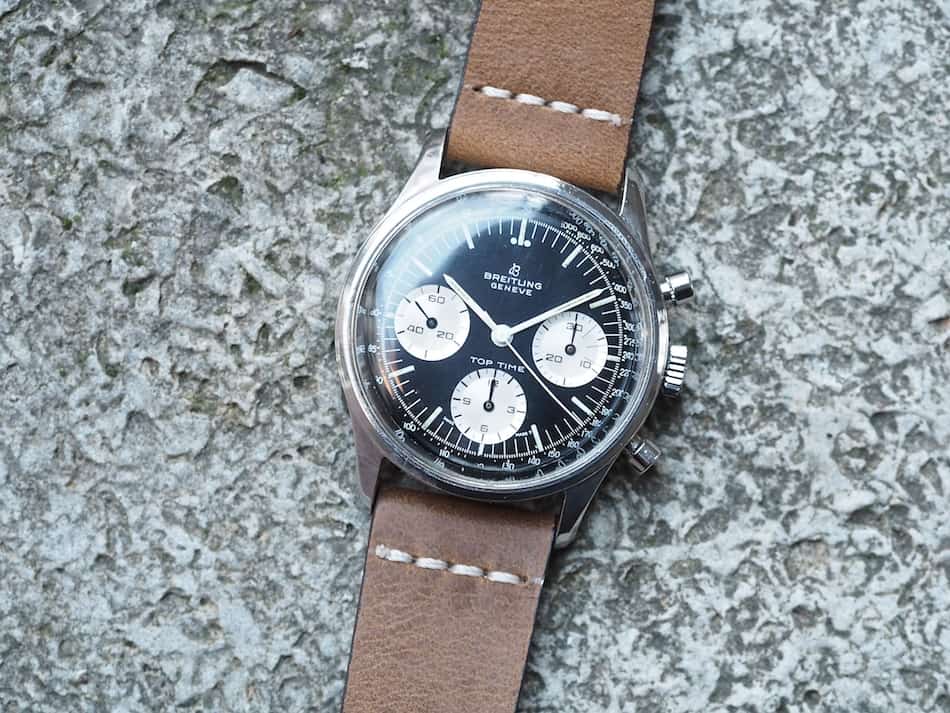
For whatever reason, the mainstream vintage watch world has largely ignored the Breitling 810 Top Time and the fact that it also brought “simple sporty” design to the market. I could posit theories as to why, but I’ll offer one primary theory; Breitling had been making modernly styled chronographs for decades prior to the release of the Top Time. Therefore, perhaps the Heuer received more press because it was truly transforming from stopwatch maker to wristwatch constructor. But – as you’ve likely guessed – I’m here to convince you that the 810 is every bit as credible as other more famous chronographs of the era. Let’s see why…

38mm Diameter Breitling Top Time 810
Let’s start with size because I think it’s one of the most endearing aspects of the Breitling 810 Top Time. The early Mark 1 810’s were produced with a case diameter of just below 38mm. Versus the petite Carrera of 36mm, the Top Times are comparatively massive. Another proportional difference is expressed in lug width. Whereas the Carrera sported slender 18mm lugs, the Breitling weighs in with a huge 21mm gap. It’s an enormous difference that adds some real visual weight to the Top Time – too much depending on the choice of strap in my opinion – and it helps further erase a major complaint that large-wristed potential vintage watch buyers often have. Make no mistake, based on dimensions alone, the 810 is a thoroughly modern watch despite an age of over 50 years!

On the wrist, the Breitling Top Time 810 shows its size well. It’s definitely not as large as a Speedmaster and it’s also not as flat. A large domed acrylic crystal actually contributes to the illusion of mass as well. I’ve set the 810 on a medium brown strap for now – I’ve tried a black racing style strap too – and it’s what I like best so far. I say “so far” as I may need to go custom with something that tapers even more dramatically towards the buckle. Why? Well, I mentioned the wide lugs above and I can’t help but think that 20mm or even 19mm might have served the case slightly better. Perhaps tapering more will fool my eye into thinking that the lugs are narrower – let’s see.
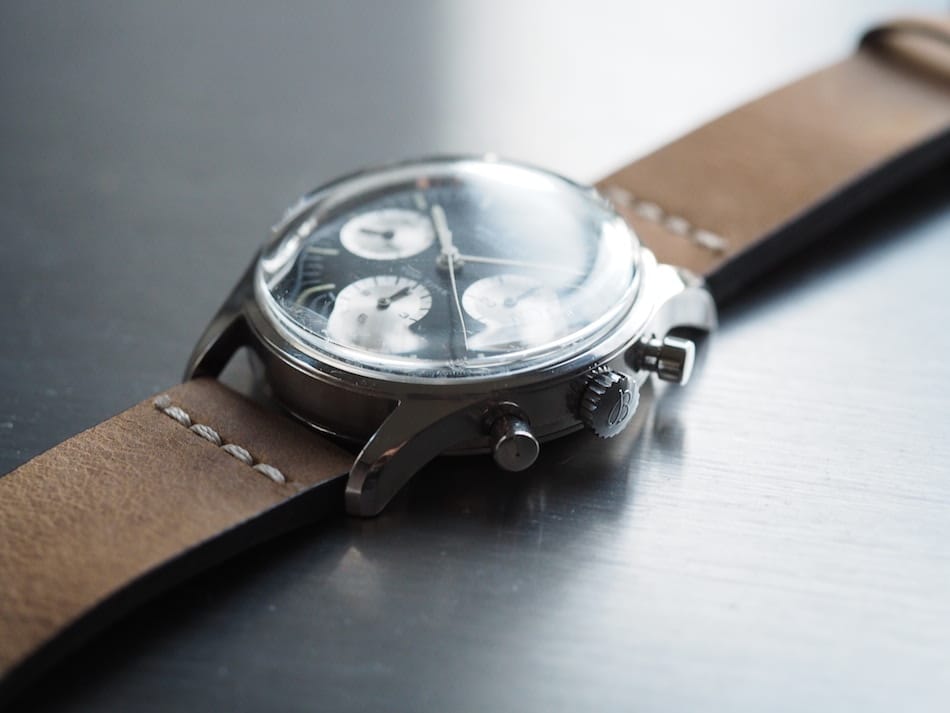
One of My Favorite Case Designs
But, if size were the only thing that counted, we’d all be retrofitting pocket watches for our wrists. No, the detail that makes the Breitling 810 Top Time, and the Mark 1 case in particular, is its case design. Simply stated, this is one of my favorite cases of all. To help exemplify my rationale, I’ve lined up a Mark 1 cased example next to a Mark 2 (1967 and later example) and you can see the elegance, and dare I say grace, found on the early piece due to its lug design. They flow organically out of the case instead of looking a bit like an add-on on the Mark 2. Both examples are worthy of praise, but it’s the early specimen’s lugs that really strike a chord with me. On the early base, the lugs feature barely noticeable chamfers on their tips – far less pronounced than on similar vintage Navitimers or Co-Pilots – and this gives them a soft appearance. Perhaps it’s a nod to older design, but it hardly seems outdated.
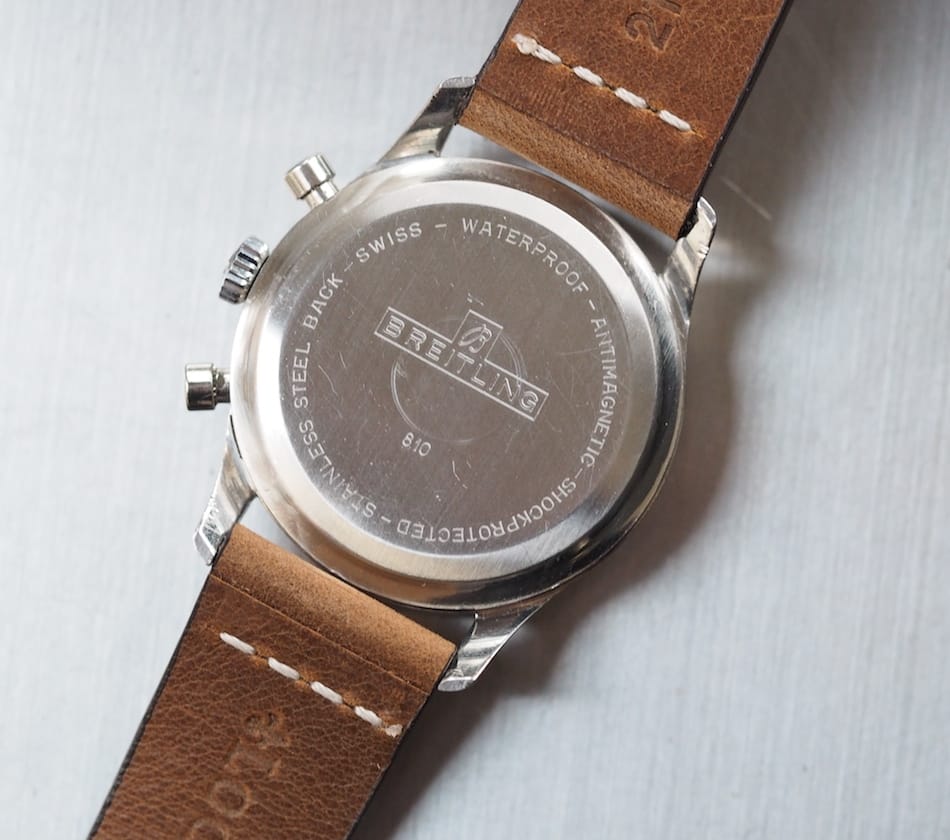
Monocoque or Snap Back?
The case design on the Breitling 810 Top Time is also worth a view from the reverse. The back, aside from containing the model reference and brand name, looks “bank vault” solid. However, this is an illusion. While the earliest Mark 1 cases (known as Mark 1.1’s) were in fact top-loader monocoques made by EPSA, this model contains a barely evident crease on the side and is actually a snap-back. Blame manufacturing costs on the change or difficult access while servicing, but the brand did a nice job of transitioning from Mark 1.1. to Mark 1.2. Have a look at the lovely concave ridge just above the case back – a wonderful detail that shouts “EPSA”.
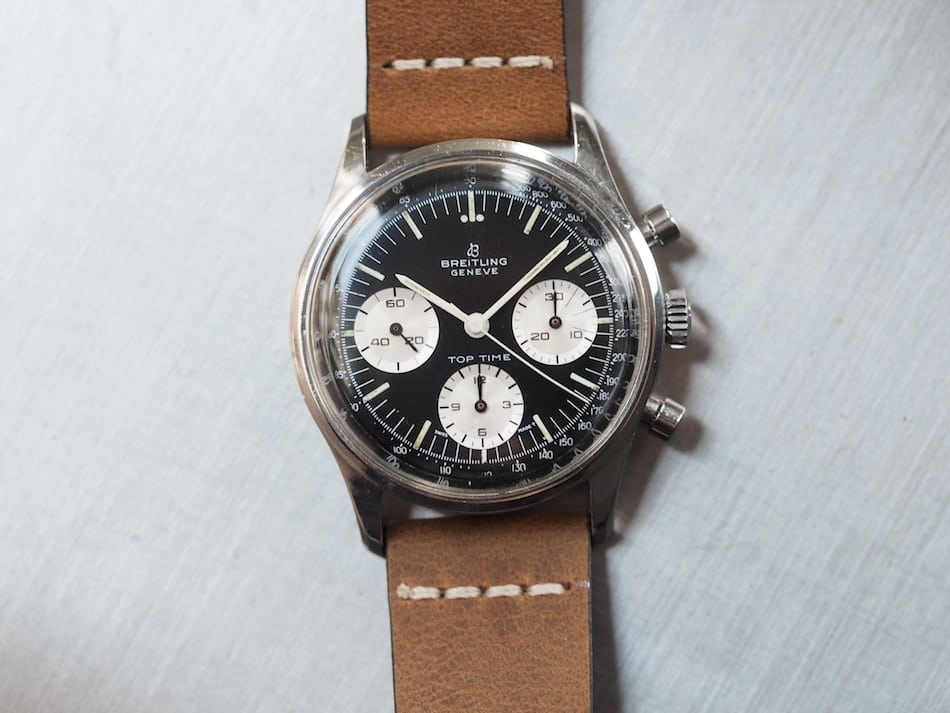
A Classic Dial Design
Dial-wise, the Breitling Top Time 810 is textbook racing chronograph. It’s a typical three-register layout with a printed outer tachymeter scale. Printing on the black dial surface is done in white while the silver ridged registers contain black numbers. The hands are thin, white and perfectly elegant for a watch with a similarly sleek case. Lume is printed on the dial for the hour markers, which is in keeping with the sporty theme. As for the name “Top Time”, it’s printed simply above the lower register in serious, capitalized font. All in all, there’s little whimsy here and clarity wise, it’s up there with the best pieces from the 1960’s.
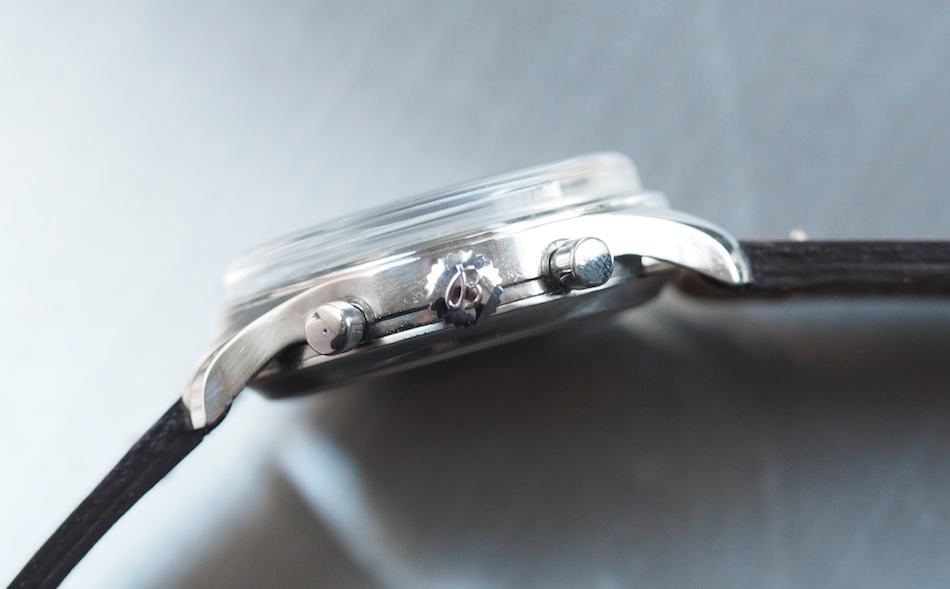
Inside the Breitling Top Time 810, one encounters the familiar Venus 178. We’ve been down this path many times before – Navitimers, Cosmonautes, and Co-Pilots – as it was Breitling’s favored choice for chronographs. There’s not much to mention in its application on the Top Time other than the fact that the Mark 1’s make do with a curiously small winding crown when lined up against the Mark 2’s. It’s a small complaint…
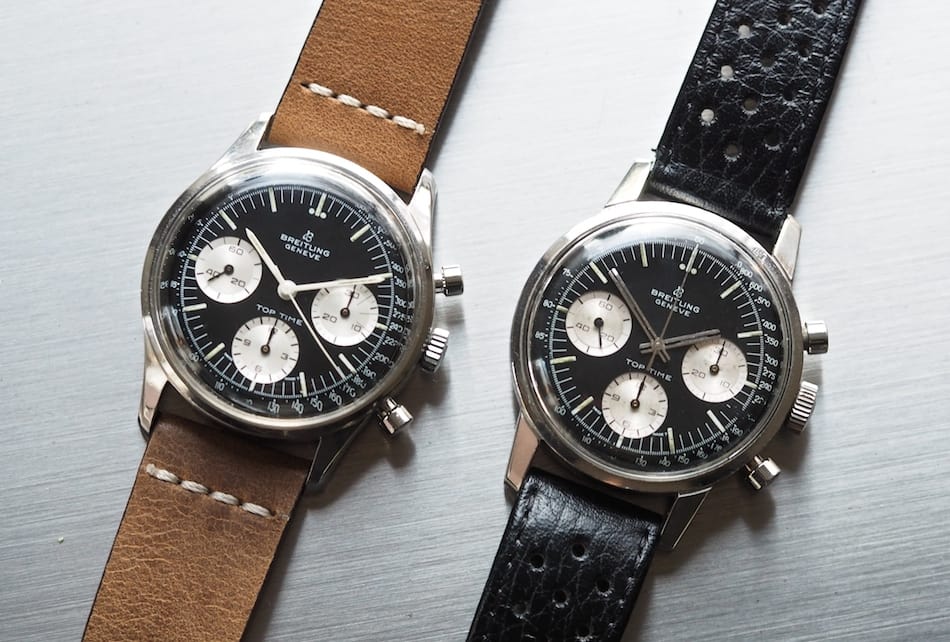
The Breitling Top Time 810 is Still Reasonable if You Can Find One
The Breitling Top Time 810 is one of those watches that has been hunted down by purists and is often mentioned on forums as a beautifully pure classic chronograph. However, similar to most Breitlings, it hasn’t become a real “darling” on the auction block. Like most older chronographs, values have risen and no matter the execution, decent stainless models now seem to safely command between $4,000 – 5,000. On the one hand, this is in stark contrast to prices only 2-3 years ago (when I bought my Mark 2) that hovered in the $1,500 – 2,000 range, but Top Time values still pale in comparison to Carreras of the same era. To me, that signals a bargain and one that won’t likely last.
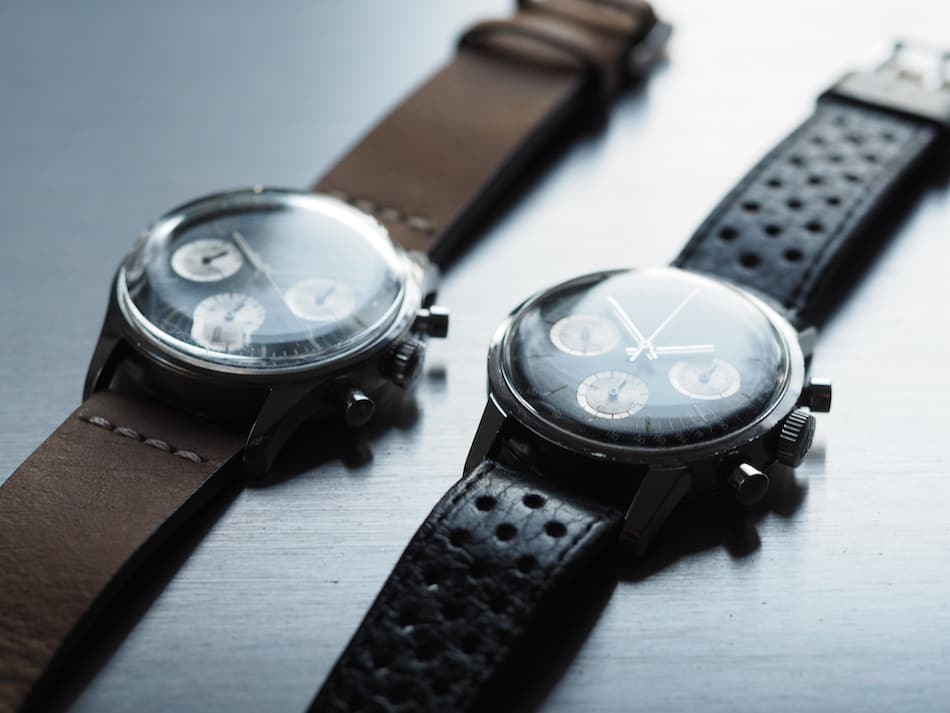
If you’re hunting for a decent stainless Breitling Top Time 810, there are many things to consider. Mark 1 cases haven’t truly separated themselves value-wise from Mark 2’s, but I personally think this is due to lack of auction activity, as the early pieces seem much more rare. Dial damage is typical (both of mine show some missing white printing) and incorrect hands are also common. So, do ensure that you do your homework and like most things, the cosmetic pieces have become increasingly difficult to find. Breitling Source is a good forum where you can ask questions and our ever-present helper on the brand, @watchfred, normally patrols the boards and is always helpful.
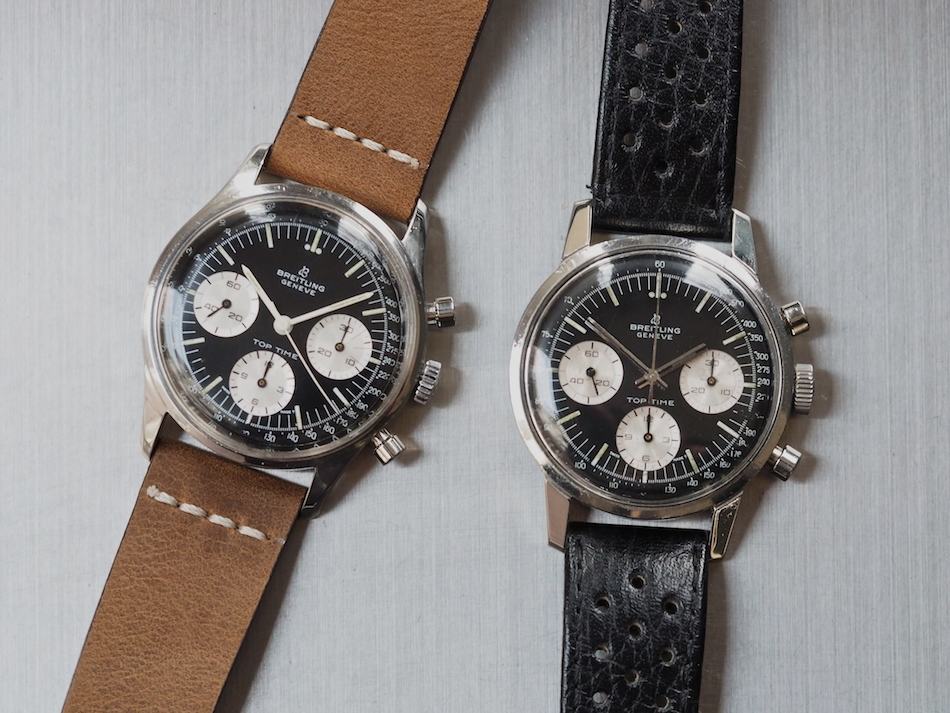
An Underrated Classic…
The Mark 1 Breitling Top Time 810 is an example of a near perfect chronograph design in my book. I have to thank Fred for offering this example to me – it was a gentleman’s agreement from over 6 months ago. Essentially, he agreed to let go of one of his prized beauties should another one not come up for sale in the meantime. Believe me, we looked daily and nothing correct came up on the market. If that doesn’t speak to the current demand for this model (and vintage chronographs in general), then I’m not sure what does. This is a beauty and will remain as a highlight in my collection.

Bonus: Breitling Top Time 810 Guide
But wait, there’s more!! In an effort to help collectors understand the stainless steel Breitling Top Time 810 variants, Fred has been generous enough to provide some photos help us create a simple and brief guide. Note that this discusses stainless models only – gold plated models exist. Also, as in all things vintage, slight variants exist. This details the most typical variants of 810 stainless production from 1964 through roughly 1972. Thanks Fred!

Mark 1.1
The first Breitling Top Time 810 (Mark 1.1) debuted in 1964 with a Venus 178 movement and was made for roughly a year. This was a 38mm monocoque case (top-loader) made by EPSA and it came in 2 variants. The first was a black dial reverse panda layout with applied lume at the hour markers.

The second was an all-silver dial with applied markers.

Mark 1.2
The Mark 1.2 Breitling Top Time 810 is the version we discussed in today’s article. This was made during 1965-1966 and, curiously, was made only in a reverse panda version with applied lume at the markers. The hour markers were of a different design than the Mark 1.1. Also, as mentioned, the 38mm case appears the same as the 1.1, but moved to a snap back. Interestingly, Craig at chronodeco treats this as a top loader – as the case backs are often reluctant to snap back into place. The Venus 178 was the only movement offered.
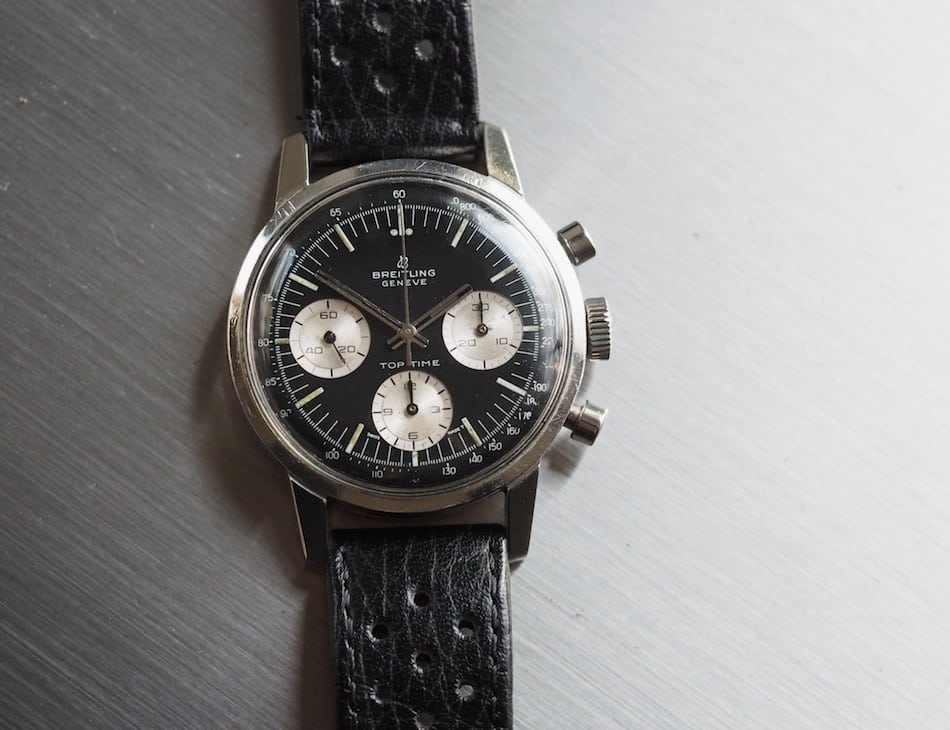
Mark 2
In 1967, the Breitling Top Time 810 changed course with an entirely different case design. At 38.5mm, the case grew and became a bit “flatter” with a less domed crystal. A snap back was retained and a larger crown was added. Additionally, the lugs changed greatly, lost their chamfer and narrowed with a lug width of 19mm versus the prior model’s gap of 21mm. The dial remained essentially the same, although variants exist where hashes do or do not exist on the minutes sub-register to denote telephone call times. Note the fact that the hands changed to larger, arguably funkier, rectangles.

The other big news was the addition of a true panda dial with applied hour markers. The Venus 178 continued as the sole powerplant.

Mark 2 with Red Hand
From roughly 1969 until 1972, the Breitling Top Time 810 soldiered on with little change aside from the addition of a red central seconds hand. Venus 178 movements were used despite the fact that production had ceased. It’s also likely that cases came from stock as well.

After this, the Top Time line continued in various forms, but the 810’s were discontinued and other movements were employed. Some were enjoyable, but in my opinion, the magic years were in the rearview mirror. We hope you enjoyed a brief look at the variants –happy collecting!



























